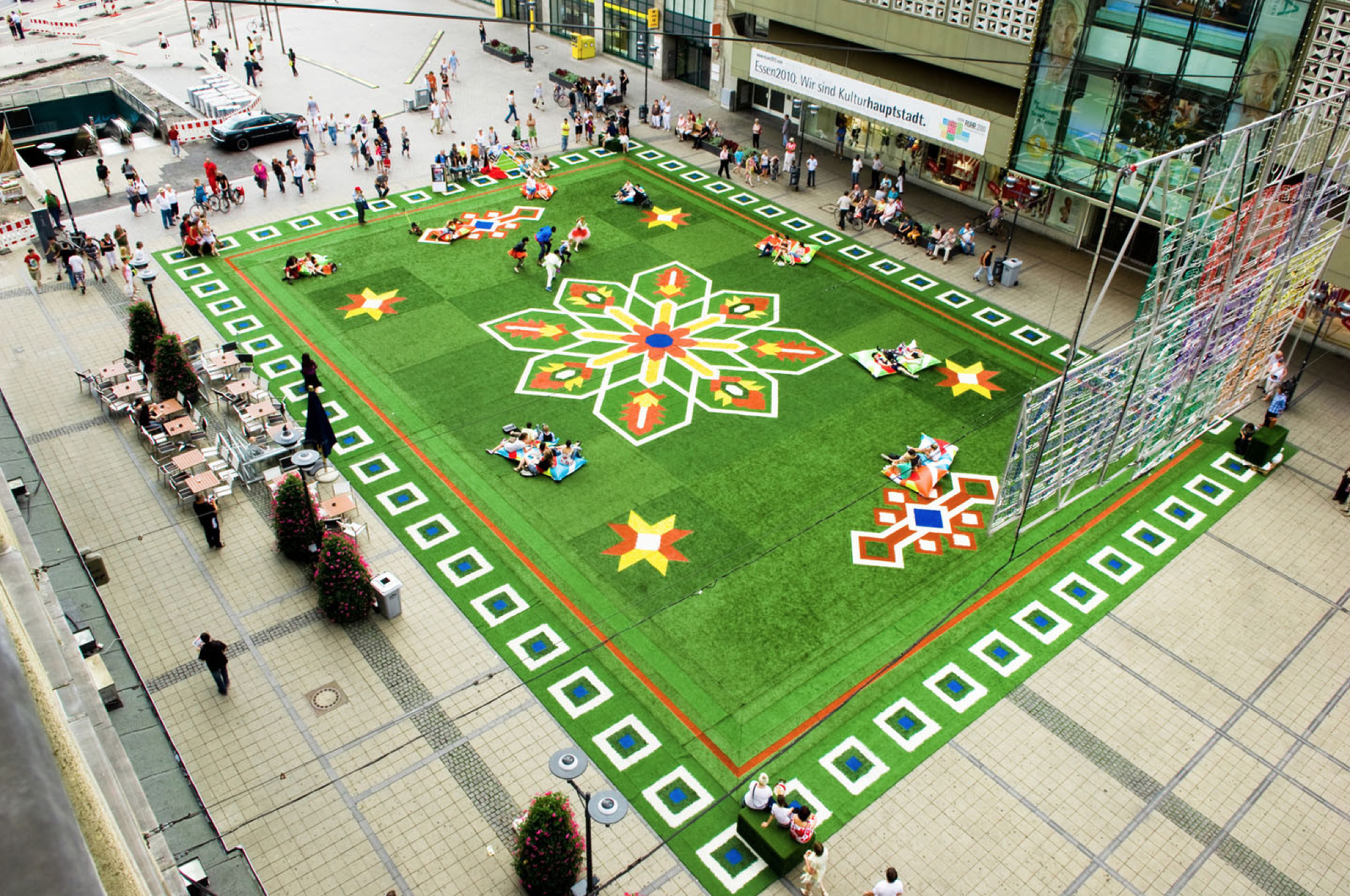An Overview:
Cities are organic: they experience life cycles, growing and developing as a result of social, economic and political forces. Urban designers, architects and planners have been taught to aim for doesn’t always relate to the fluidity of urban environment, and this permanence has seen a number of cities struggling to adapt to the changes like shrinkage, industrialisation, population shifts. Temporary urbanism has significant potential as a dynamic planning tool to manage the change by directly engaging the community with the development of the neighbourhood to create socially responsible cities.
The fundamentals of temporary urbanism can be traced back to the origins of humanity, and the impermanent shelters built by man and are significant benefits associated with flexible and inherently responsive development strategy. Temporary structures, initiatives and activities have grown over the centuries cultivating complex and multifaceted cities that work as functioning organisms on the human scale.

Temporary urbanism due to its impermanent nature often is seen as inferior to longer-term solutions. The traditional masterplan has always been a vital part of every designer’s planning toolbox for decades. The approach has been refined over years of trial and experimentation and is a somewhat rigid approach to placemaking. The rapid pace of today’s society and has raised a question mark over traditional planning strategies that need more flexible design frameworks to keep it with the ever-evolving status of cities.
so, ever thought about what will become of manufacturing towns in the post-industrial world? The once-prosperous factory cities are today facing with dwindling industry, shrinking populations and fundamentals of their role in the modern global economy. Cities are changing and expanding faster than ever before and the world is becoming more interconnected whilst rapid societal, cultural, technological and economical transformations. Urban interventions must re-evaluate to seek for a more resilient and flexible method to respond to the ever-emerging needs of new land uses.
A Brief History:
The origins of temporary urbanism can be traced back to the beginning of the human race with makeshift shelters being amongst the first structures ever erected. Over time, temporary initiatives have been used in a variety of situations to manage the change that arises from a number of situations like social and economic variations.
There are numerous cases throughout the history of temporary initiatives attempted to manage change, for examples the widespread squatter settlements and self-built housing that emerged as a result of The Great Depression in 1930. Another such period of unprecedented change came after World War II, a man-made disaster that caused devastation in a number of European cities and resulted in the rapid construction of mass emergency.
Professional designers and planners have become increasingly interested in temporary initiatives in light of vast swathes of vacant lands in cities. This vacant land acts as a physical representation of how helpless static master planning can be.

Temporary Urbanism:
Temporary urbanism originated in site occupancy without the land title with stakeholders freely taking advantage of the vacant site. The purpose of the occupancy has been very diverse for accommodating collectives, occupancy for artistic and cultural purposes, occupancy for more green spaces and the unoccupied land for local needs. In the past years, a broad range of initiatives has been driven to a variety of motivations from vacant property to office development to civic, cultural and social projects. Examples of Temporary Urbanism are as follows:
- Tempo Project, Paris
Tempo is a temporary project deployed on three sites along the Ourcq canal and the aim of this initiative is to find project promoters willing to revitalise redundant spaces in order to help the local residents retake ownership before redevelopment.
Site Features: Redundant spaces along the Ourcq canal, redundant space facing the Clock Pavillion, Pasteur redundant space.
Legal Framework: Temporary occupancy agreements.
2. Les Grands Voisins project
The Grands Voisins project has occupied the site on the initiative of the Aurore social and emergency housing association, with the support of Paris city.
Occupancy and uses: Mixed-use occupancy for social and emergency housing, studios for artists, premises for small businesses, workshops for craftspersons, art galleries, shops and a restaurant.
Site feature: Former hospital in Paris and a new housing development project underway on site.
Methodologies for Temporary Urbanism:
- Occasion: Encompasses one-off events that might be a fixture for an isolated occasion and encompasses large-scale, organised events as well as small-scale events.
- Substitution: Includes temporary structures or activities that act as a substitute for a permanent use that has been displaced or is unable to function. They can either be low impact or generate impulses that can reinvent the permanent use when it’s re-established on site.
- Freeload: The exploitation of permanent or more long-term uses by operating adjacent to them.
- Experiment: The flexibility of temporary urbanism allows it to be used as a method of experimentation and can either be low-impact or can be used to inform future designs through results gained from experiments.
- Reactivate: Temporary initiatives can be used to revitalise areas through the reactivation of vacant storefronts or underused streets.
Technically, it is true that some temporary occupancy projects have been a great success with residents, workers and visitors alike. But how is it possible to strike balance between the sustainability and implementation of planned projects?

